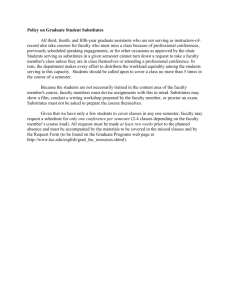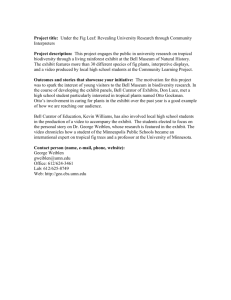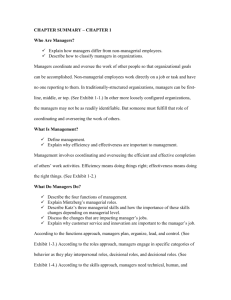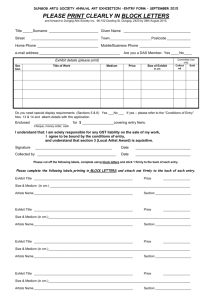Exhibit 3 - DFW Web Presence
advertisement
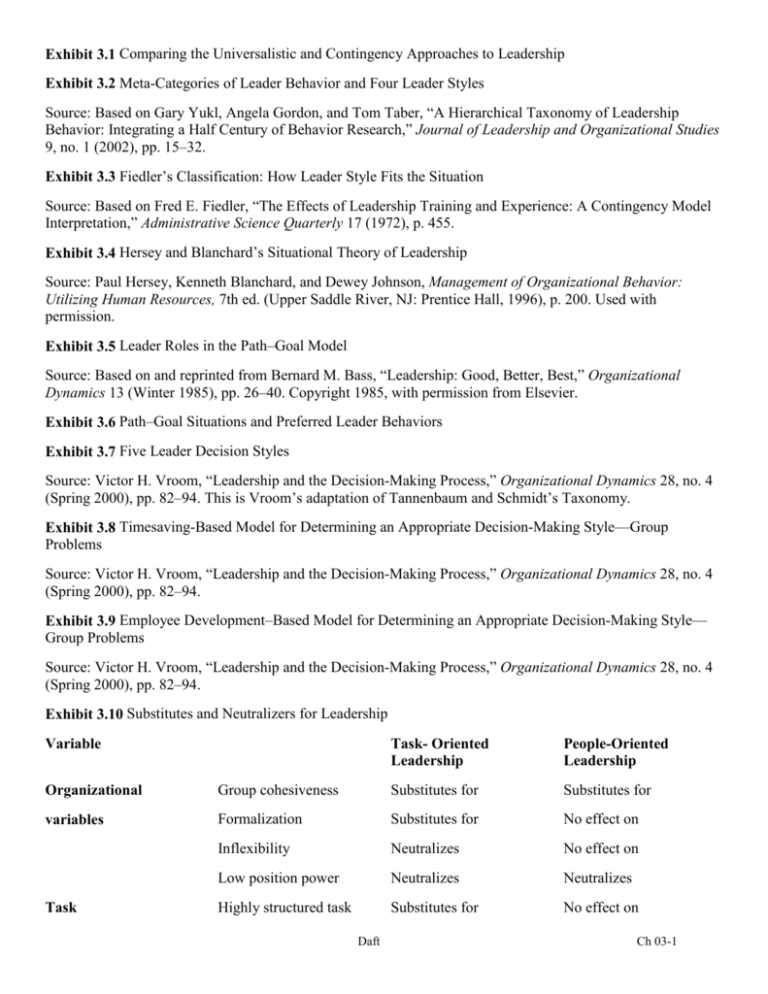
Exhibit 3.1 Comparing the Universalistic and Contingency Approaches to Leadership Exhibit 3.2 Meta-Categories of Leader Behavior and Four Leader Styles Source: Based on Gary Yukl, Angela Gordon, and Tom Taber, “A Hierarchical Taxonomy of Leadership Behavior: Integrating a Half Century of Behavior Research,” Journal of Leadership and Organizational Studies 9, no. 1 (2002), pp. 15–32. Exhibit 3.3 Fiedler’s Classification: How Leader Style Fits the Situation Source: Based on Fred E. Fiedler, “The Effects of Leadership Training and Experience: A Contingency Model Interpretation,” Administrative Science Quarterly 17 (1972), p. 455. Exhibit 3.4 Hersey and Blanchard’s Situational Theory of Leadership Source: Paul Hersey, Kenneth Blanchard, and Dewey Johnson, Management of Organizational Behavior: Utilizing Human Resources, 7th ed. (Upper Saddle River, NJ: Prentice Hall, 1996), p. 200. Used with permission. Exhibit 3.5 Leader Roles in the Path–Goal Model Source: Based on and reprinted from Bernard M. Bass, “Leadership: Good, Better, Best,” Organizational Dynamics 13 (Winter 1985), pp. 26–40. Copyright 1985, with permission from Elsevier. Exhibit 3.6 Path–Goal Situations and Preferred Leader Behaviors Exhibit 3.7 Five Leader Decision Styles Source: Victor H. Vroom, “Leadership and the Decision-Making Process,” Organizational Dynamics 28, no. 4 (Spring 2000), pp. 82–94. This is Vroom’s adaptation of Tannenbaum and Schmidt’s Taxonomy. Exhibit 3.8 Timesaving-Based Model for Determining an Appropriate Decision-Making Style—Group Problems Source: Victor H. Vroom, “Leadership and the Decision-Making Process,” Organizational Dynamics 28, no. 4 (Spring 2000), pp. 82–94. Exhibit 3.9 Employee Development–Based Model for Determining an Appropriate Decision-Making Style— Group Problems Source: Victor H. Vroom, “Leadership and the Decision-Making Process,” Organizational Dynamics 28, no. 4 (Spring 2000), pp. 82–94. Exhibit 3.10 Substitutes and Neutralizers for Leadership Variable Task- Oriented Leadership People-Oriented Leadership Organizational Group cohesiveness Substitutes for Substitutes for variables Formalization Substitutes for No effect on Inflexibility Neutralizes No effect on Low position power Neutralizes Neutralizes Highly structured task Substitutes for No effect on Task Daft Ch 03-1 Automatic feedback Substitutes for No effect on Intrinsic satisfaction No effect on Substitutes for Follower Professionalism Substitutes for Substitutes for characteristics Training/experience Substitutes for No effect on Low value of rewards Neutralizes Neutralizes characteristics Ch 03-2 Daft


